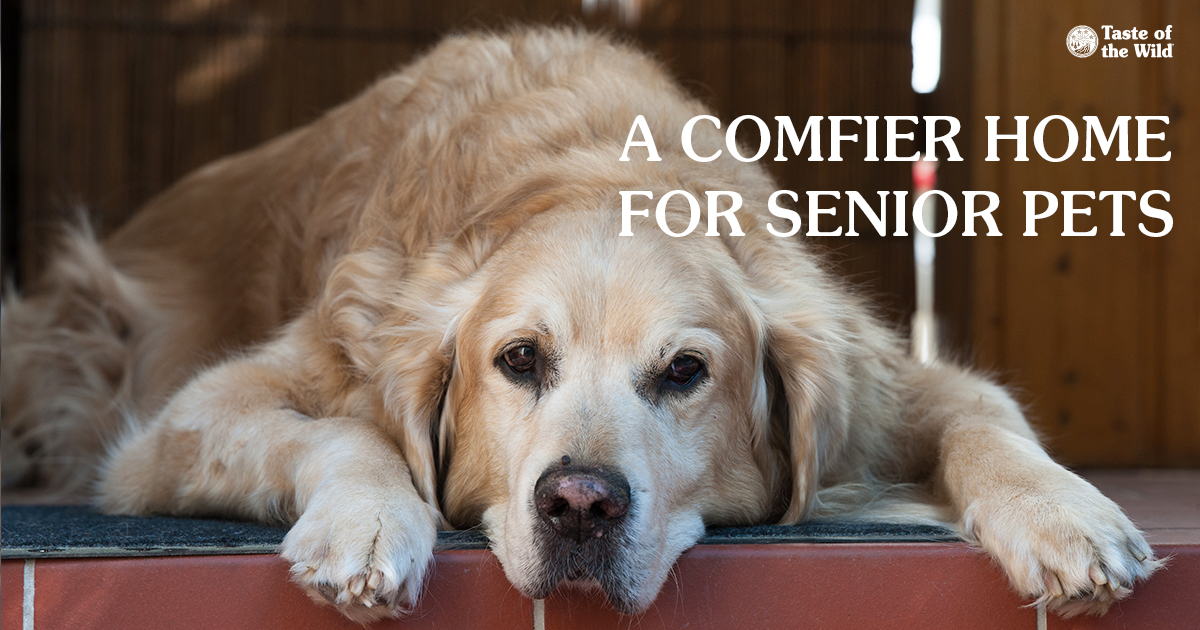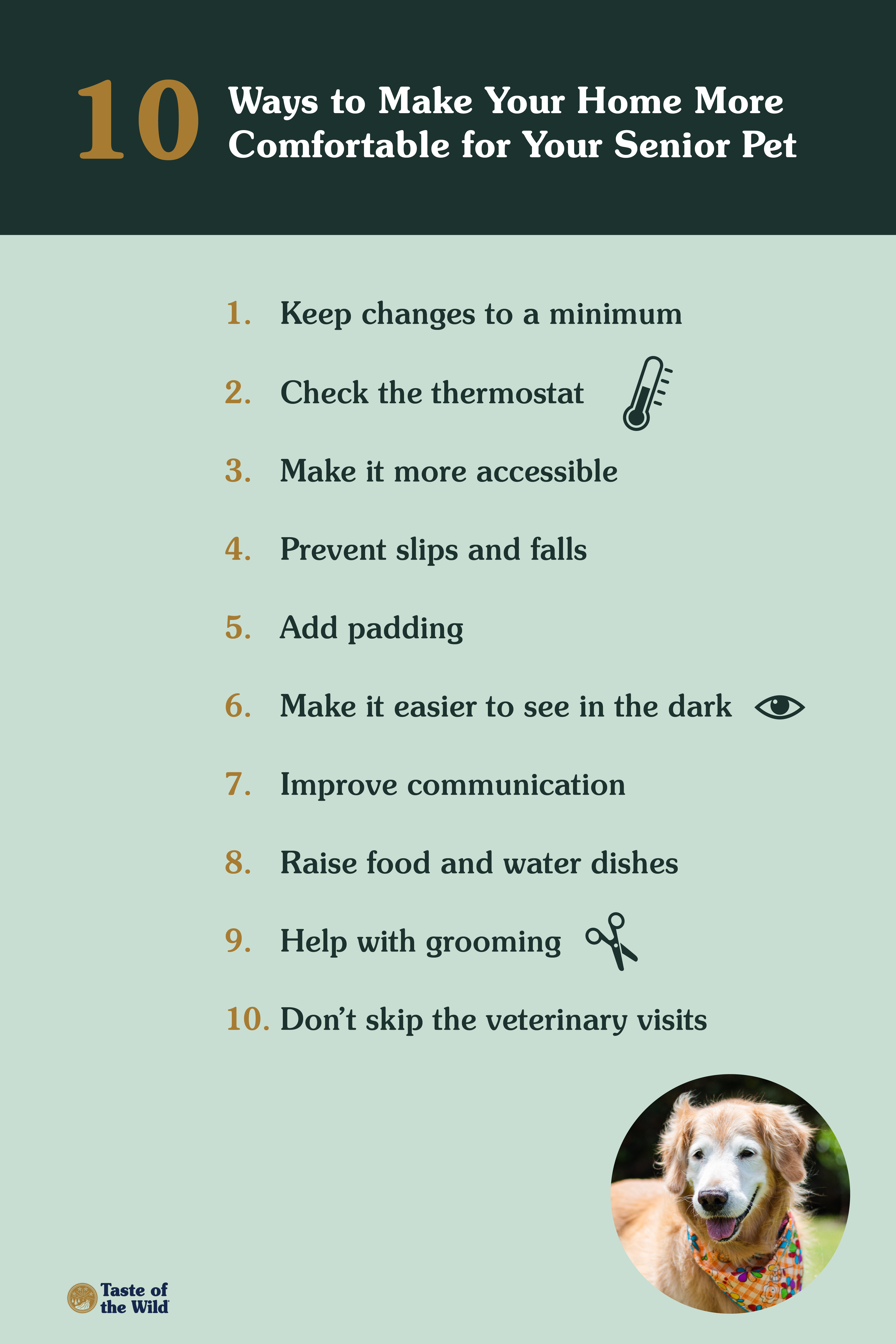
Do you have a golden oldie pet in your house? If so, they’re probably experiencing age-related changes to go with their greying muzzles. Chances are, they have a creaky joint or two. Their hearing or vision may not be what it used to be. And some may even have a bit of memory loss.
As part of Senior Pet Month, we’re sharing some simple changes you can make around the house to help your older pet feel more comfortable.
Keep changes to a minimum — If possible, refrain from rearranging the furniture, which can feel disorienting to a senior pet. A consistent, predictable routine can also help your pet feel less stressed or anxious.
Check the thermostat — Older pets may have thinner coats or trouble regulating their body heat during the cold winter months. An extra sweater or blanket can help. Avoid using heating pads, which can burn tender skin.
Make it more accessible — Senior dogs and cats often suffer from arthritis, which can make it painful to climb or descend stairs and jump onto furniture. A carpeted ramp can make stairs easier. With a footstool positioned near the couch, your pet can make two smaller leaps to curl up next to you. Consider placing a litterbox on each floor and make sure the sides of the box are low enough for your cat to step over easily.
Prevent slips and falls — Your older pet’s muscles may not be as strong as they once were. That’s why it helps to cover slippery hardwood or linoleum floors with non-slip rugs or yoga mats in areas your pet often walks. Keep the floor clear of toys or clutter that your pet may trip over. Your pet’s nails and the hair between the footpads should be trimmed so it’s easier for them to get traction when walking. Use baby gates to prevent an accidental tumble down the stairs.
Add padding — Help cushion old bones with special orthopedic pet beds, or simply add a cozy comforter to the current bed.
Make it easier to see in the dark — Older pets may have compromised night vision, so adding a nightlight or two in the hallways may help them get around.
Improve communication — Pets with hearing loss can be taught simple words or commands with visual hand signals.
Raise food and water dishes — Since it can be difficult for senior pets to stretch their necks low, save them the effort by elevating their dishes a few inches.
Help with grooming — There’s a reason older pets can look a bit scruffy: they may not be limber enough to clean hard-to-reach body parts. The fur can become matted, especially in long-haired pets, which can be painful as it pulls against the skin. Regular brushing can help them look and feel their best.
Don’t skip the veterinary visits — Early diagnosis and treatment of age-related diseases can help keep your older pet healthy. If needed, medications for conditions such as arthritis can help relieve your pet’s pain so they can keep up with their favorite daily activities for as long as possible.

The information in this blog has been developed with our veterinarian and is designed to help educate pet parents. If you have questions or concerns about your pet's health or nutrition, please talk with your veterinarian.
